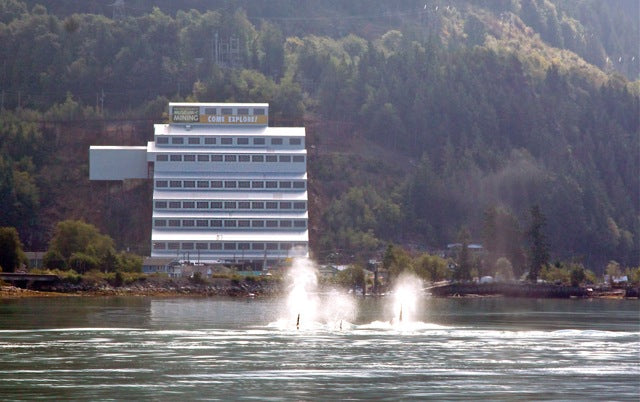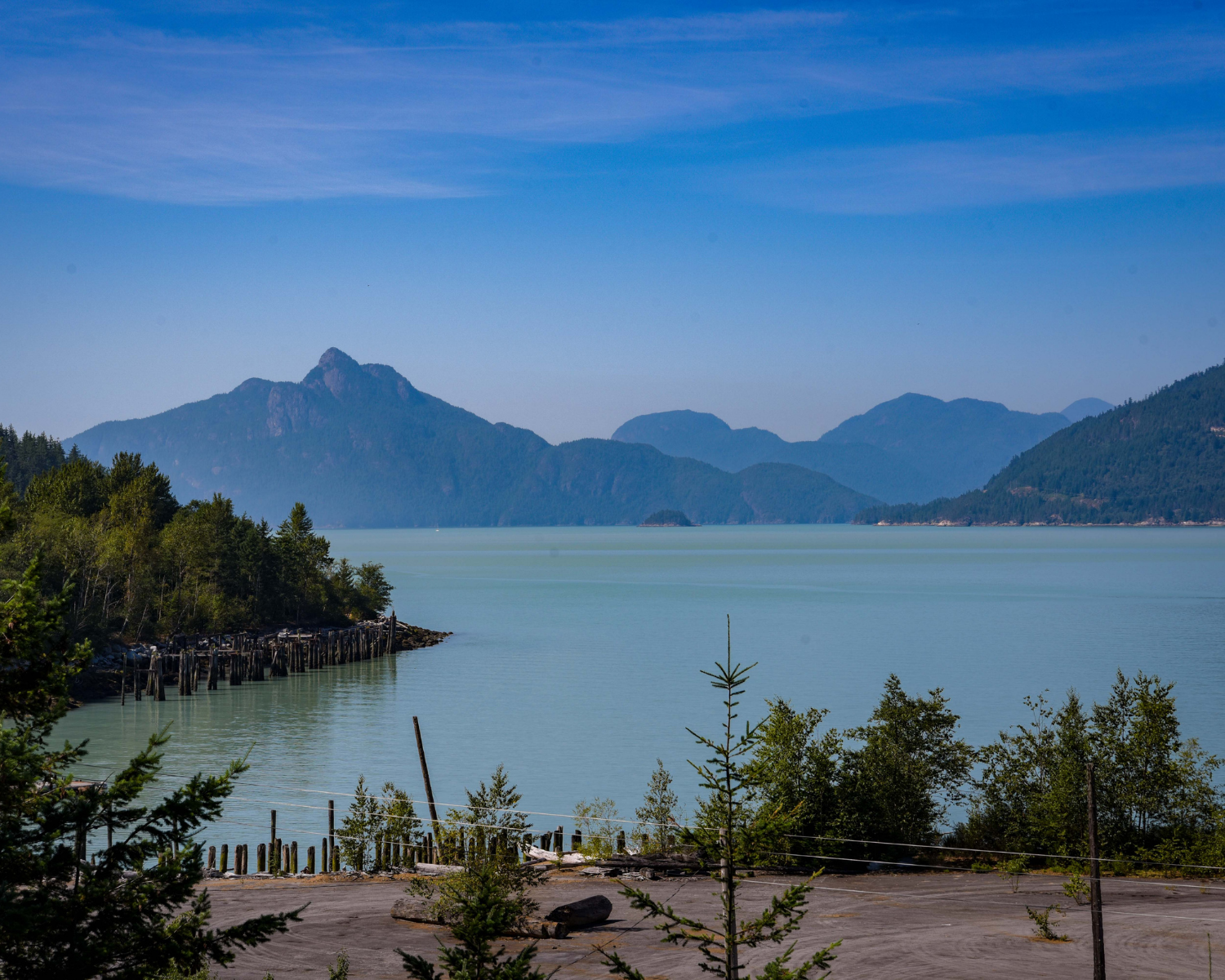My shopping cart
Your cart is currently empty.
Continue ShoppingWhen the mine was at its peak, the surrounding environment paid a stiff price. Local groundwater, creeks and the waters of nearby Howe Sound all suffered losses that hung on for many decades. The source of the problem was known as Acid Rock Drainage (ARD).
ARD occurs naturally, anywhere that metal sulphides such as pyrite are exposed to air and water. At Britannia, chalcopyrite (copper ore), galena (lead ore) and sphalerite (zinc ore) were also involved. The sulphuric acid and dissolved metals that were produced by ARD wound up polluting the local environment once they found their way into groundwater, creeks and the Howe Sound.
The overwhelming size of the mine meant larger amounts of ARD were generated. Environmental regulations of the day were minimal, so little was done to attack the problem. To make matters worse, the digging of 210 km of tunnels in the mountains, plus the fractured nature of the rock, created a much larger surface for the damaging chemical reaction. To add to that, with high snow and heavy rainfall winding up in the mine's open pit, more water was becoming polluted.
Back in the 1930's, the issue was already a concern, but little was understood about the impact on the environment. Copper launders existed at the mine which helped slightly, but it was done for economic, not environmental, reasons. These launders were long troughs containing iron scraps. Mine water was fed through the troughs before being discharged. An iron-copper exchange meant the iron pieces became coated in copper, while relatively non-toxic iron dissolved and flowed with the water out of the troughs. The copper was then collected and sold. So it did help reduce the amount of copper entering Howe Sound, but only until the mine was closed in 1974.
On closure, mine owners Anaconda installed an outflow pipe that discharged the water 50 metres below sea level. The water was not treated, but was taken away from the intertidal zone, the most vulnerable area for aquatic life. Anaconda also installed a mud/earth dam near the 2200 portal (reinstated in 2001). As a result, water was stopped from entering Britannia Creek, until the dam failed sometime in the 1980's/90's.


To neutralize the acidity, lime slurry (lime/water mixture) is added to a tank containing the ARD. This raises the pH from 3.8 to 9.3. In other words, it goes from being acidic to being alkaline. When this happens, the metals, which were dissolved in the ARD, naturally precipitate then become metal particles. Those particles go into another tank where a man-made customized polymer is added. This electrostatically attracts the metal particles. They sink to the bottom allowing the clean water to be removed at the top. Below, the metal sludge is removed and dewatered. Twice a year, it's taken up to the original Jane Basin mining pit. Here it helps cap the pit, preventing some of the water from entering the mine. Because the metal sludge is not in the form of metal sulphides, it cannot form ARD in the future. Every day, 600 to 700 kg of metal sludge is removed, all metal that is no longer discharged into Howe Sound.
Britannia went from meeting all the environmental standards of its time while in operation to becoming one of the worst industrial pollution points in North America following its closure before the clean-up began. What happened? Explore the changing environmental standards as well as the issues between government and landowners that caused Britannia’s deterioration.
The Facts About Britannia's Environment
Environmental Journeys - Government Legislation
Environmental Journeys - 1967 to 2005
Thankfully, Britannia's ARD issue is now ancient history. Working with the province, land owners and community, an intensive remediation campaign was launched. Since 2002, Golder Associates have spearheaded a cleanup of local contaminated soils. A further step was taken with EPCOR's water treatment plant in 2005. The mine water is captured and treated resulting in clean water. With the acidity neutralized and the metals removed, the water is discharged into Howe Sound.
The end-result has been a successful turnaround. Life has returned to the waters surrounding the mine, including Howe Sound.